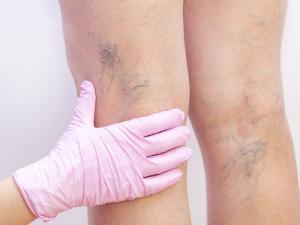Peripheral Artery Disease
Cramping, pain, or tiredness in your legs that goes away when walking may indicate peripheral artery disease (PAD). Mubashar Choudry, MD, provides the latest in PAD diagnosis and treatment at his offices in Washington Vascular Specialists in Takoma Park, Largo, and Frederick, Maryland. If you have PAD or suspect this circulatory condition is causing your symptoms, call Washington Vascular Specialists or schedule a visit online now.
Peripheral Artery Disease (PAD) Q&A
What is peripheral artery disease (PAD)?
Peripheral artery disease (PAD) is a circulatory condition where atherosclerosis narrows the arteries in your legs, stomach, arms, and head. Atherosclerosis is the medical term that describes when plaque deposits made of fat and cholesterol attach to your arterial walls.
Coronary artery disease (CAD) is also a circulatory condition, but atherosclerosis affects the arteries of the heart.
PAD is extremely dangerous and can lead to CAD, heart attack, and stroke. Untreated PAD may cause you to develop gangrene and require amputation of the affected area.

What are the symptoms of peripheral artery disease?
PAD commonly mimics other conditions, but Dr. Choudry is an expert diagnostician. The common symptoms of PAD include:
- Cramping in the leg and hip muscles
- Pain in the leg and hip muscles
- Tiredness in the leg and hip muscles
- Discomfort with movement that resolves with rest
These symptoms can feel similar to a pulled or tight muscle, so call Dr. Choudry to find out if PAD is present. Being over age 65 and smoking cigarettes increase your risk for PAD, other risk factors include:
- High blood pressure
- High cholesterol
- Diabetes
Any of these risk factors indicates it’s a good idea to schedule a PAD screening with Dr. Choudry.
Wearing tight-fitting socks can also compress the blood vessels in your legs and make symptoms worse.

The image on the left shows a normal artery. The right shows an artery narrowed by atherosclerosis, causing PAD.
How is peripheral artery disease diagnosed?
The first test is a blood pressure reading of your arm and ankle. If there’s an abnormality between the blood pressure in your arm and ankle, Dr. Choudry performs a diagnostic ultrasound.
During the diagnostic ultrasound, Dr. Choudry waves an ultrasound wand over your leg that emits sound waves to create an image of the blood vessels inside your leg. You don’t feel anything during the procedure, but the Doppler and ultrasound (duplex) imaging help Dr. Choudry measure the amount of blood flow in your legs.
How is peripheral artery disease treated?
Should your test results reveal reveals PAD, Dr. Choudry explains the PAD treatment options appropriate for your case. In mild cases, exercise, quitting smoking, and taking medication can prevent or reduce symptoms of PAD.
If you have moderate to severe symptoms or conservative treatments for PAD have been unsuccessful, Dr. Choudry performs minimally-invasive endovascular and surgical treatments of the arteries.
To determine your risk for PAD or if you have this circulatory condition, call Dr. Choudry or schedule a visit online today to get help.
